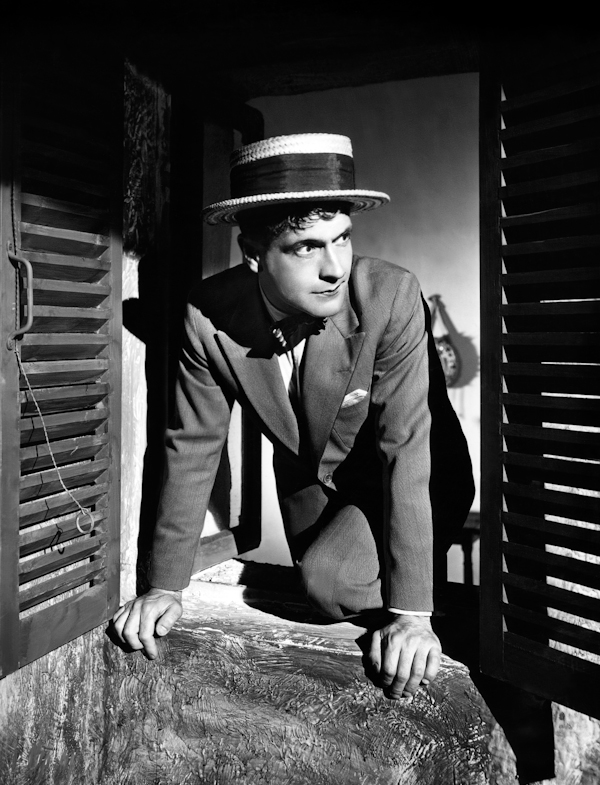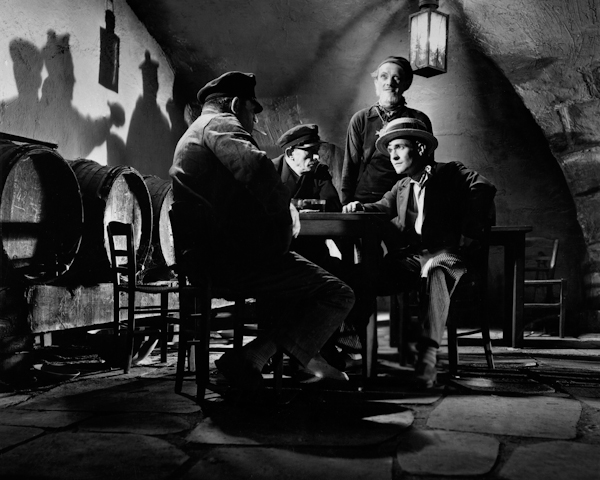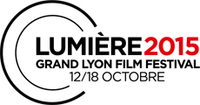Marius
The Singing Pagnol
PostED ON 21.09.2015 AT 2:20PM
INTERVIEW - Adapted from a successful play by Marcel Pagnol, Marius (1931) is the first part of the trilogy by the Marseille author, followed by Fanny (1932) and César (1936). All three films will be shown at the Lumière festival in their restored version, after being presented at the Vieux Port of Marseille in late August 2015.
The writer's grandson Nicolas - who will introduce some of the screenings - discusses the restoration of Marius, which tells the story of a young man employed at his father's bar… and his intended, Fanny.

What prompted your grandfather to adapt Marius to the cinema?
In 1930, two years after writing Marius, he went to London to see The Broadway Melody by Harry Beaumont. It was the first film in cinema history with full sound. My grandfather, then the most famous playwright of his time, immediately understood that the talkies offered new possibilities of writing. He meets Bob Kane, head of Paramount, and convinces him to help him adapt the play. Alexander Korda is chosen to direct the film, while Marcel is in charge of directing the actors. Three versions of the film are shot at the same time: one in French, one in German and one in Swedish.
How was the film received?
The film is released in 1931 and is a huge popular success, but the entire theater industry is immediately on his back. To them, he is a traitor. At the time, my grandfather had a major difference of opinion with his friend René Clair, for whom silent films were the essence of the cinema. For Marcel, who comes from the theater world, the dialogue is more important than the image. Though they are very good friends, they end up insulting each other through the newspapers. It is not until the 1950s that Marcel Pagnol is recognized as a great filmmaker.
The characters' Marseille accent plays a central role in the atmosphere of the film...
Naturally, and even more so in the 30s, when Marseille culture is booming and is all the rage in Paris, where many operettas are performed. Marius is a movie anchored in Marseille, and my grandfather delivered his accent as part of a France that was not the same as it is today. The regions had identities with much stronger characteristics. Today, culture is smoothed over by television. My grandfather used to say, "We achieve the universal from home." He never tried to reinvent the art. His only filter was his personality.

Marius was directed by Alexander Korda. What was their relationship regarding the film?
Korda taught Marcel to place a camera, to lead a team or to make a shooting script, while Marcel taught Korda to direct actors. They never worked together again, but they remained friends. Moreover, their entire correspondence is wonderful.
What was the main challenge of restoring Marius?
The sound work, which was our biggest fear. It was the beginning of talkies. The audio is in mono. We scanned and calibrated it. The result is superb, even if in places there are some small flaws. But for a 1931 film, this is normal. The photography is magnificent; it enables us to rediscover the film. Especially since we recovered the original framing, which was recut in 1:37. The negative was severely damaged. The restoration took four months.
Why did you ask Guillaume Schiffman to oversee the calibration of the film?
First of all, he had overseen the films of Truffaut. He knows black and whites very well and since we did not have a reference print, we needed the work of a goldsmith on this film. William was clearly the best positioned because Marcel Pagnol is one of his favorite filmmakers. He has also read a great deal about the manner of photography at the time and about the filmography of the cinematographer Ted Pahle, who was German.
Interview by B.P.
---
Marius by Alexander Korda (1931)
Fanny by Marc Allégrat (1932)
César by Marcel Pagnol (1936)

